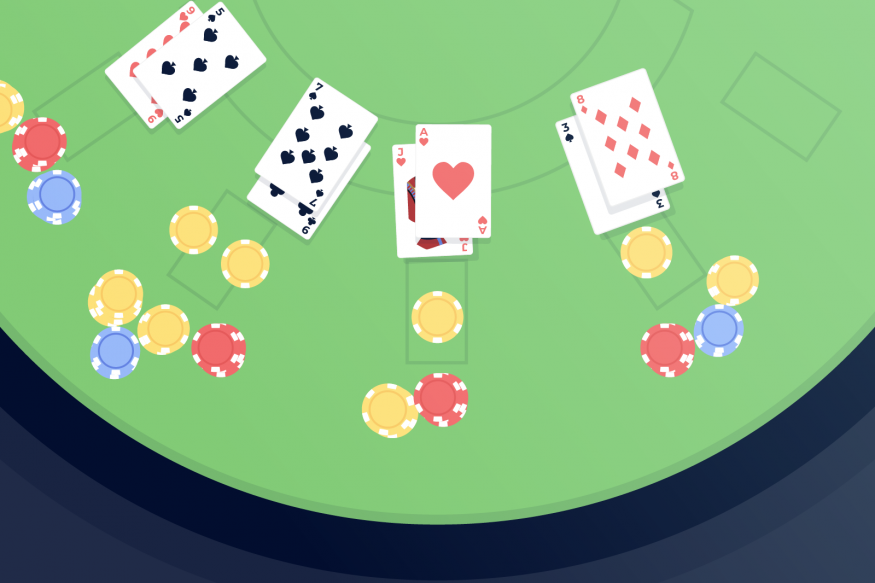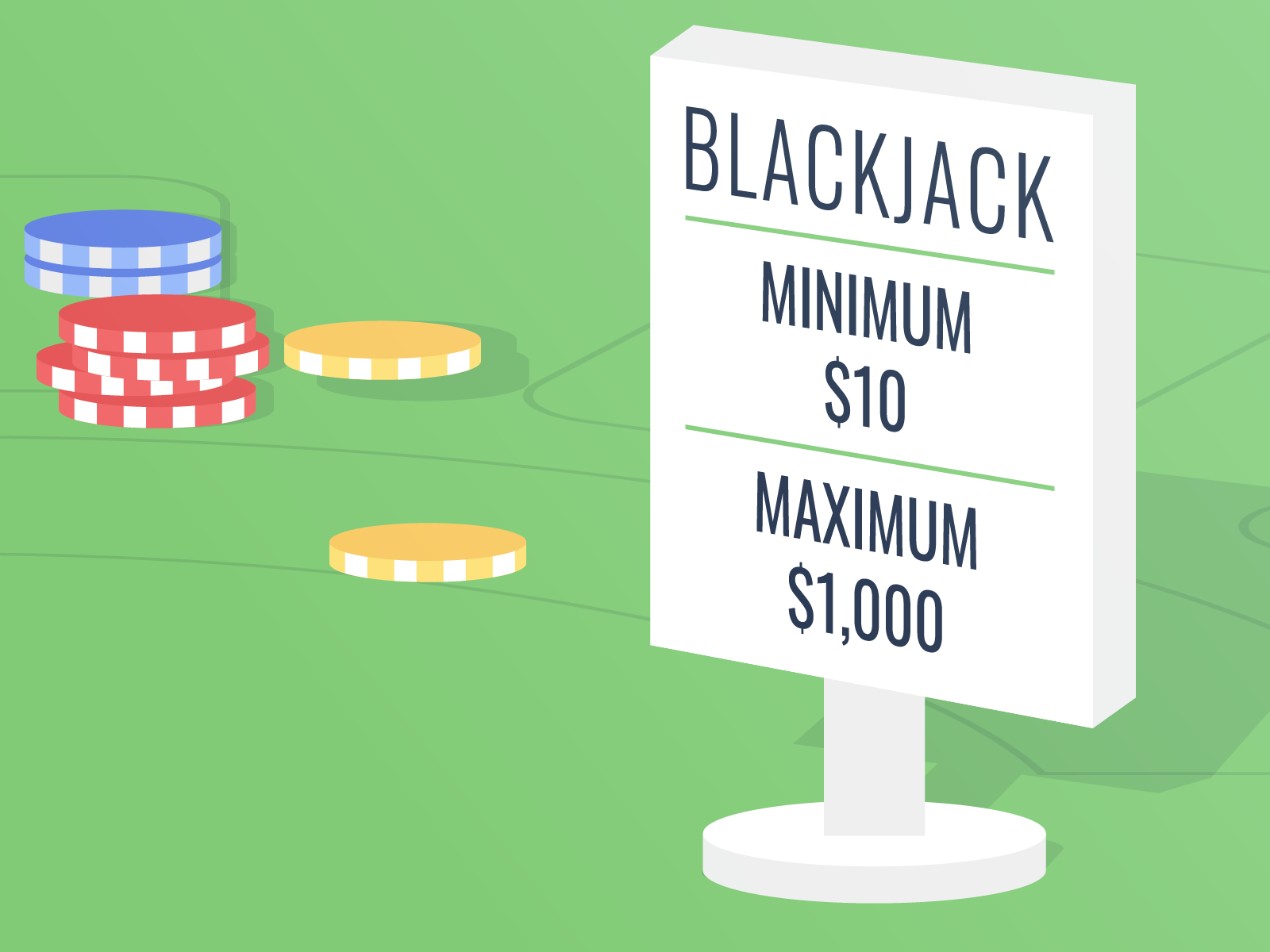How To Scout The Best Blackjack Tables

Casinos are distracting. They’re meant to be.
But for both your mental health and that of your bankroll, it’s important to take a little time to find the blackjack table that’s right for you.
You’ll be wanting three things: Table stakes that fit your bankroll, great blackjack rules, and a table where you can relax and have fun.
Step 1: Scout For The Right Minimums and Maximums
Table stakes are important because if you’re playing on a table with a minimum bet too high for your bankroll, it’s much more likely that you will go bust sooner.
Just a few bad hands will wipe you out.
But if you can afford a few more minimum bets, you can weather a small run of bad luck.
A good rule of thumb is a bankroll of at least 20 times the table minimum, and preferably 40 times. That means you should bring at least $100 dollars to a $5 table, and $500 to a $25 table.
Always try and set loss limits for each gaming session and stick to them. Then use those limits when scouting blackjack tables to play.
Limits are always posted on the table sign on each table. You should be aware that management can (and does) change table minimums to meet demand, often with little notice.

Be prepared to walk away if your $10 game suddenly becomes a $25 game and your bankroll isn’t big enough.
Depending on the size of the casino, lower limit games may be featured up front, sometimes in “fun pits” designed to catch the eye of passers-by.
More medium limits may be further back in the casino in comparatively quieter areas, and high limits will often be found off to the side in a private room.
When in doubt, simply ask one of the blackjack dealers, floor people, or even the cocktail servers where you might find the particular limits you are looking for.
Step 2: Scout The Best Blackjack Conditions
Once you’ve found tables with appropriate stakes, you want to try and get the most bang for your buck. This means cutting the house advantage as low as you can.
The three biggest things you can look for to keep the blackjack house edge small are table rules, the number of decks in play, and the type of shuffler being used.
1. Table Rules
While it might seem odd, many casinos have different rules on their blackjack tables depending on their table limits.
You want to balance your need for a certain minimum bet vs. the best rules you can find.
A couple of nefarious rules often seen at lower limit tables are only paying 6/5 on blackjack instead of 3/2 and even charging a commission of 25 cents on each hand to play.
You should avoid these at all costs.
Ask the dealers if they have full pay blackjack tables, and if they are a bit higher limits it may be worth hunting them down in this particular case. Or even ask if nearby casinos have full pay tables.
Those 6/5 tables can add as much as 300% to the house advantage and the commission tables can be even worse.
You then want to look for other rules that have less impact on the house advantage but can still make a big difference long term.
Ideally, you want to look for tables that allow:
- Dealer stands on soft 17.
- A player may double on any first two cards.
- A player may double after split.
- Aces can be split up to 4 times.
These common rules can save you a lot of money over several hours of play.
2. Number Of Decks Used
In general, the fewer decks in use, the better for the player.
However, while eight decks are very common, the difference between eight and six decks is just a few hundredths of a percent.
If you can find a double-deck game, however, it is much more lucrative for the player.
A double deck with all the above rules has about half the house advantage of an eight-deck game with those same rules.
That means you would lose only half the money on average playing the double deck.
The casino of course is aware of this, and double deck games have minimums that reflect this lower house advantage.
Again, you will have to balance your bankroll against the house rules to find an appropriate game that meets your budget.
3. Shufflers
There are three types of shufflers.
One is where the casino still allows the dealer to take the time to shuffle. This can be a several-minute process depending on the dealer and the number of decks in play, but it offers a nice respite where you don’t have money at risk, where the casino is still rating you for being in action, and where you can catch your breath.
Then on other tables, you will see shuffle machines. These are attached to the table and are readily noticeable once you’ve seen them.
On these tables, the dealer will be putting their used cards in the machine at the end of the shoe, and immediately pulling out freshly shuffled decks of cards from the machine. Then the dealer will begin dealing again.
It only stands to reason that the more bets you make in an hour, the greater the house advantage.
And the casino has decided that they want to make money instead of shuffling.
Not only can this make for a poorer gaming experience with dealers who are exhausted and just dealing robotically, but you will lose more money on these games quicker over time.
The other possible machine that you may see is a continuous shuffler.
You can identify them by the dealer immediately putting their used cards into the machine instead of at the end of the shoe.
This is a bad choice not only for the reasons listed above but also because putting the used cards right back into play increases the house edge, at least a little.
Step 3: Scout For The Best Blackjack Environment

At this point, you’ll have spent a lot of time finding a blackjack table that fits your budget and keeps the house advantage to a minimum. But in the end, you want to have a good time.
Sitting down with a belligerent drunk who’s smoking a foul-smelling cigar and banging the table is not going to make for the best experience.
Take a few more seconds before you sit down and take a good look at the other players.
Are they laughing and having fun, or do they look miserable?
If you’re not a big fan of cigarette smoke it won’t make sense to sit down surrounded by people smoking like chimneys.
How about the dealer: Are they interacting with the players and having a good time, or are their heads down – just going through the motions?
An extra 10 or 15 seconds of observing the table may mean the difference between having a great night or having a lousy time that forces you to start scouting tables all over again.
Take the time to find a table that is a good fit not just for your bankroll and your chances of winning, but also one that makes for a smooth, enjoyable, and hopefully profitable experience.


